10 Photographs You Have to Know.
There are pictures that stay in our head forever. There are pictures which, despite the fact that many years have passed, become icons. There are pictures that tell stories of humanity. There are photos that change the world and our perception of reality.
Pictures can evoke emotions and bring back memories. They help to make history more tangible and real. They can shape people’s opinions and change the course of events. Pictures have enormous power.
In this post, I would like to show you some of the most important photograph of all time and the stories behind them. I invite you to explore those images that influenced the world and that is important than you know them.
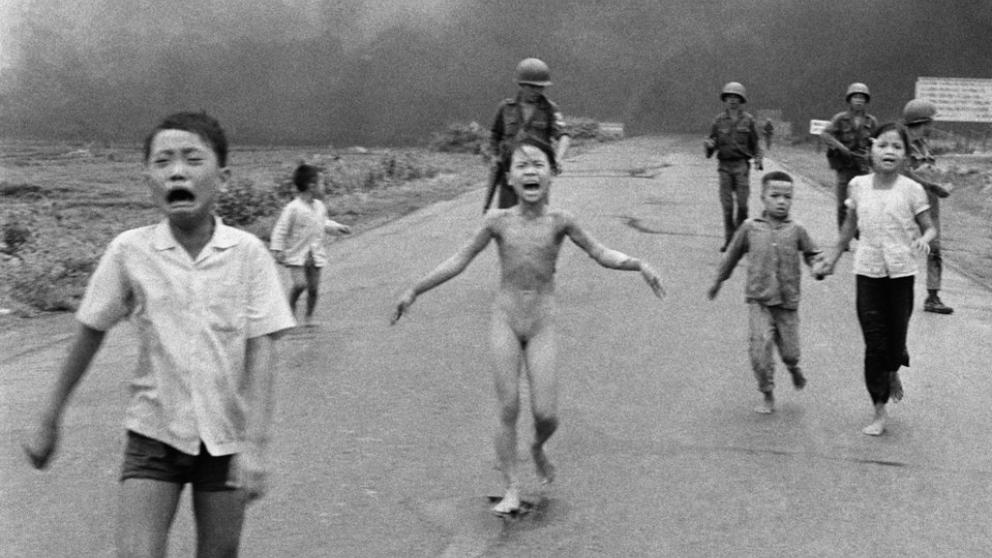
Known as “Napalm Girl” is one of the 100 the most famous photos in the world.
On June 8, 1972, in the final phase of the controversial Vietnam War, AP photographer Nick Ut was outside the Trang Bang village.
Suddenly they heard the North American-South Vietnamese planes. The planes dropped several bombs of napalm – a flammable liquid that adheres to human skin causing burns.
The 9-year-old Kim Phuc girl who lived there was seriously burned and ran out of town, removing the remains of her burning clothes. At that time, photographer Nick Ut took several photos and immediately took the girl to the hospital where she remained for 14 months, undergoing 17 skin grafting operations.
The photographer won Pulitzer for this photo.

Kim Phuc, now 56, lives in Canada. It is there that she asked for political asylum when the plane from Cuba (where she lived with 29 years) on which she was on vacation to Moscow, stopped to refuel on Canadian soil.
Kim is a Unesco Goodwill Ambassador and founded an organization for children wounded and maimed in war.
“I grew up hating that photograph, because for me it was synonymous with pain, torment and agony. Over the years and after a long struggle, I understood that this photograph was an instrument to make people think about the horrors of war. That photograph thus became a path to peace, for I realized that if I could not escape that photograph, I should go back and work with that image for peace. “
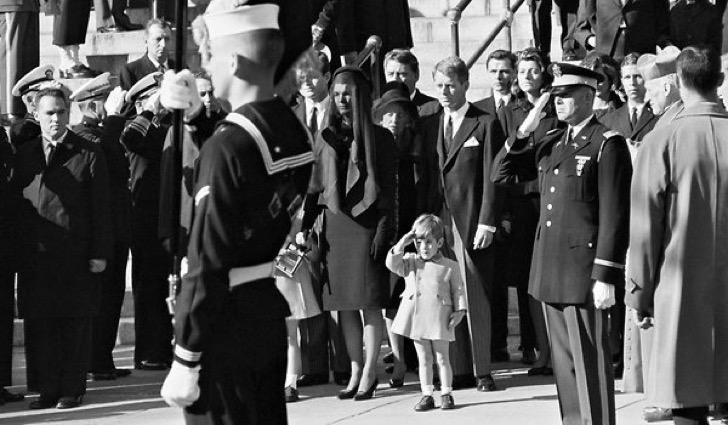
November 25, 1963. Funeral of J. F. Kennedy. A big event. Stan Stearns, was the only photographer in his 70s who was there to document the event.
There were hundreds of photographers who went at the funeral. They were so focused on Jackie and the coffin that they weren’t focused on Kennedy’s son. There were other photographers who took this photo but not intentionally. Stan focused on his son and the story he wanted to tell.
He lowered his position and took this photo of Kennedy’s son waving.
Everyone else went to the cemetery. The photographer was so sure that he obtained the photo, that he ran to the United Press International office where he worked, to show the photo and develop his only roll of film.
The editor was furious. His head was going to explode! “What are you doing? Go back to the funeral! We need the best photo. If you don’t have the photo, I’m going to fire you!”
So Stan developed the photo in the darkroom with his boss on the other side so furious “I’ll kill you if you don’t have a good photo!” The photographer showed the shot he made and the boss said, “Oh wow! Stan, you got the shot! You will keep your job!”
Later, this photo was featured in almost every newspaper. And he was the first photographer to show the photo of the Kennedy funeral, because everyone else was still in the cemetery.
This photo adds humanity to this devastating event such as the Kennedy funeral. It shows that Kennedy was not only a president, he was especially a human, a father.
Stan tried to show the story from his point of view. He focused on what was important to him. And he was right.
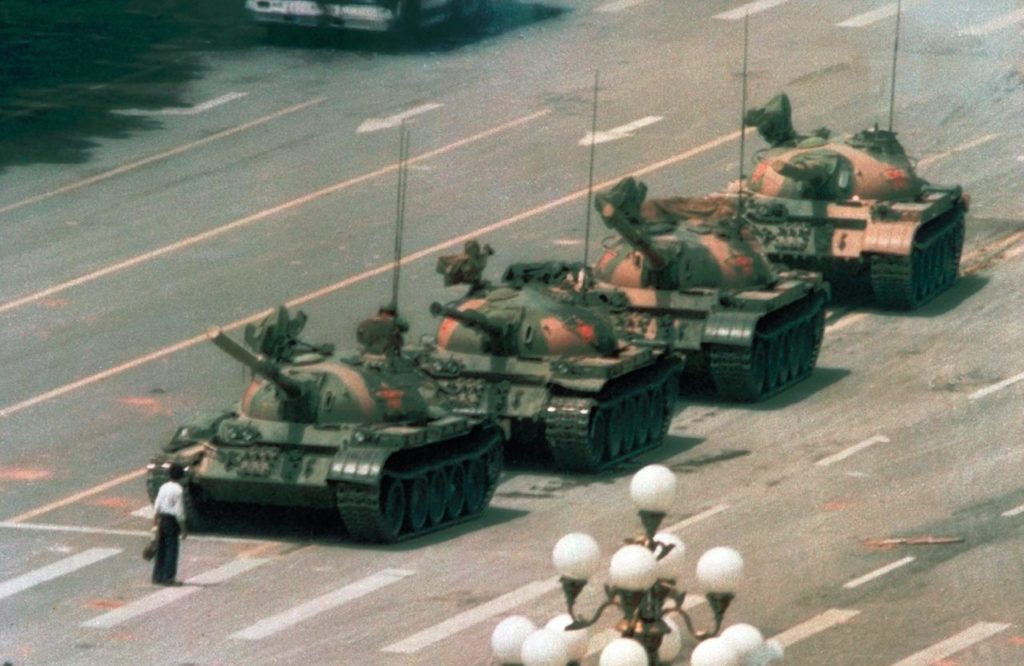
On the morning of June 5, 1989, photographer Jeff Widener was sitting on a balcony on the sixth floor of the Beijing Hotel. It was a day after the Tiananmen Square massacre, when Chinese troops attacked pro-democracy protesters who camped in the square.
The Associated Press sent Widener to document the consequences. While photographing everything that was happening in the plaza, a column of tanks began to emerge from the plaza.
Widener started to shoot and suddenly saw through his lens a man with shopping bags who stopped right in front of tanks. He refused to move and would not let the tanks through.
Suddenly the man climbed into a tank. The tanks kept their fire. Finally, the man was taken away, but not before Widener did his 3 shots.
Although there were more photographers who captured it, it is the Widener image that appeared on the covers of the world.
We don’t know what was the reason that the man had. Maybe he lost his family or just got fed up with the government. His posture and believes are more important than his own life.
“Years later I realized it was an iconic photo. All hope is not lost yet. There is still dignity. You can still fight for your rights” – Widener
The man, “Tank Man” after so many years remains unidentified.
A symbol of resistance to unjust regimes everywhere.
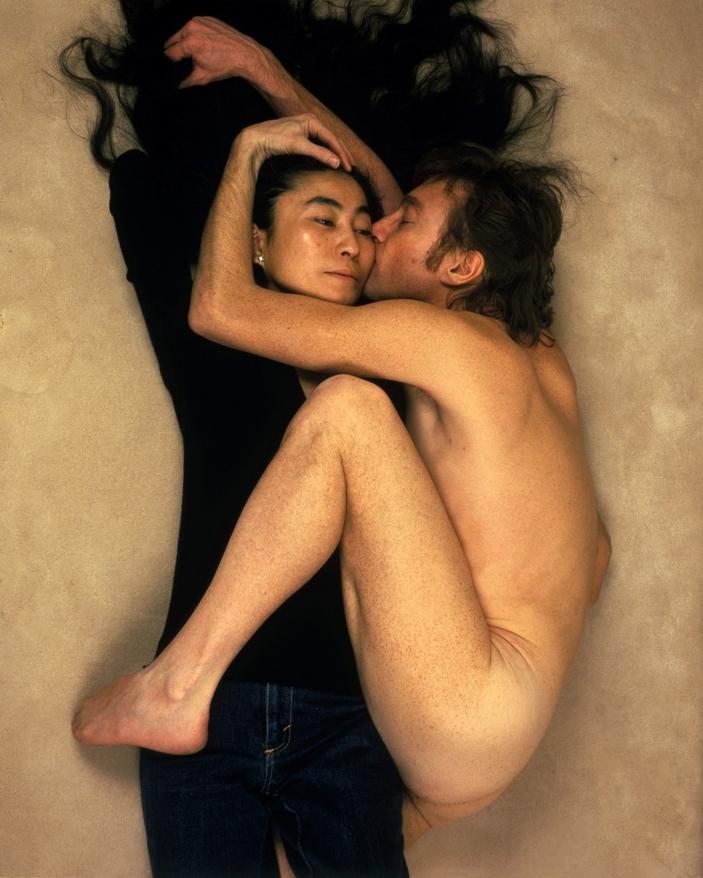
This photo was done by the famous photographer Annie Leibovitz in 1980. It is probably one of the most famous photo of Lennon ever taken. It is the last photo of Lennon, because the same day, at 11 at night he was shot by Mark David Chapman.
Originally, Leibovitz wanted to portray the nude couple, but the Ono did not accept. She said “The t-shirt is ok, but the pants no”. So Annie proposed that the Lennon could be naked and Yoko would stay with clothes.
It was immediately noticed that the contrast between the two could work. “You’ve captured exactly what our relationship is like,” they told.
“Suddenly, that photograph has a story. You look at it and think that this is their last kiss or that they are saying goodbye. You can imagine all kinds of things about it. I think it is amazing when a photograph has so many levels,” he said. Leibovitz
Lennon never saw this photo. He was shot the same day.

This image taken by Eddie Adamas of AP in 1968 was became a symbol of the cruelty of warfare. The photo occurred during the Vietnam War that turned into an international war.
On the one hand, the Republic of Vietnam with the support of the United States and other allied nations. On the other, the National Liberation Front of Vietnam (Viet Cong) and the army of the Democratic Republic of Vietnam with the support of the Soviet Union and China.
Nguyễn Ngọc Loan, South Vietnamese General shot a handcuffed prisoner Nguyễn Văn Lém in the head in the middle of a Saigon street.
It could look like the officer killed an innocent prisoner, perhaps even a civilian. This was the reason why the image was understood by the anti-war people of the world, adopted by the anti-war protesters of the planet as a throwing weapon against the Vietnam War itself.
But we should know the story behind the photo to make out opinion. What is the story?
Lem was not a civil. He was a member of Viet Cong and a leader of a death squad that had been targeting and killing officers and families of the South Vietnam National Police. Lem also had been responsible for the murder of one of General Loan’s oldest officers, as well as the murder of the General’s family ( children, wife and his old mother)
Finally, Lem is captured and General Loan takes revenge with a shot to the head. Even if this was a revenge, and the act of justice. Pacifists still continued to display this photo as the symbol of the army’s cruelty to the citizens of North Vietnam. still had the same strength as the first time.
Photographer Adams was persecuted for having taken that photo and, above all, he felt that it had been misinterpreted: “If you are this man, this general, and you just caught this guy after he had killed your family … How do you know you wouldn’t have pulled the trigger yourself? You have to put yourself in that situation … It was a war. “
Adams called the general a hero, because “sometimes an image can be misleading because it doesn’t tell the whole story.”
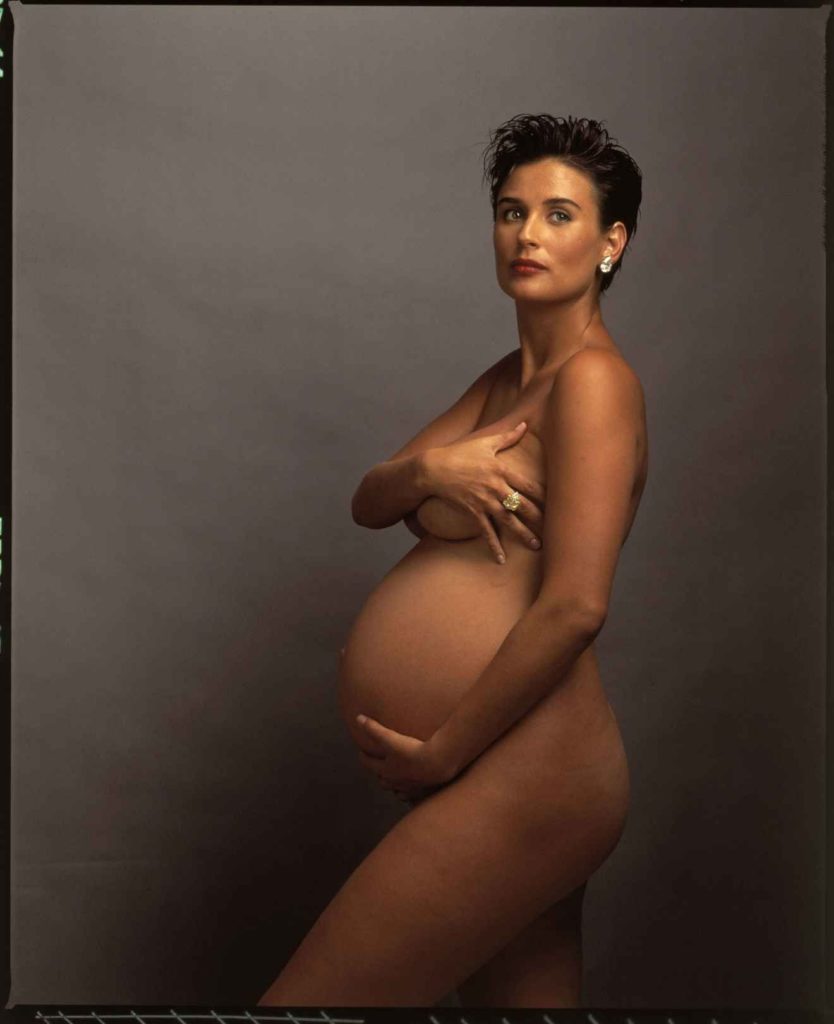
Before, the naked body of a pregnant woman and the big belly were considered something intimate that should remain in the private sphere and should stay hidden for the public. But this photo changed it forever. One of the most controversial Vanity Fair covers in history showed Demi Moore pregnant with his second child.
Annie previously photographed Demi when she was pregnant with her first daughter, but these photos were only for the couple.
During the session with the second daughter, Moor had to wear Isaac Mizrahi’s dress and underwear. After the session, photographer took some nude photos for her exclusive and private use.
But someone suggested that these photos would be great for the magazine cover. The editor of magazine and Moor agreed.
Magazine sales skyrocketed, but there were shops that said it was pornography. It was branded as vulgar, of being a painful example of how the culture sexualizes everything, “even the most sacred”, and of being a shameless exhibition of an actress willing to do anything to achieve more fame. But they also achieved something else.
The produced a change in society’s perception of something, an enduring change whose effects are very much alive in our present.
Demi’s belly sowed the revolutionary idea that you could be pregnant and be sexy.
That belly, this cover, give a vision of pregnancy not as a cumbersome circumstance that many women have to go through so that the whole of humanity continues to exist. They show it to us as a source of pride worthy of being exhibited and admired.
They are in favor of femininity and direct motherhood to the sensitivity of all those who felt attacked by it and considered it unpleasant, even without knowing how to pinpoint exactly what offended them.
It was empowering before we started using the word

“The Vulture and the little girl” formerly known as “Struggling Girl.” became an icon of famine in deep Africa as a direct allegory of what was happening in Sudan. The child, the problem of poverty and hunger; the vulture, the terrible stamp of capitalism; and the photographer, the indifference of society.
Photo taken by Kevin Carter in Sudan in 1993 and later published in the New York Times, won the Pulitzer price a year later.
Many people accused Carter, for not helping the girl, but he tried to justify himself, claiming that the girl was doing his needs, that the tribe was a few meters away, the vulture was simply waiting for his food and he had to continue with his work.
Although Carter later won the award, he was not able to enjoy it “I’m really, really sorry I didn’t pick the child up,” he said. Consumed with the violence he’d witnessed, and haunted by the questions as to the little girl’s fate, he have committed suicide three months later after receiving the award.
Some photographers say the Carter took a photo with a tele lens, which makes the image compress and in reality the vulture could be 20 meters away from the child.
18 years later, they found the village where the boy from the photo- Kong Nyong (formerly taken by girl) was raised. Nyong did not fall into the vulture’s claws or starve. In fact, in the photo you can see that the baby had a plastic bracelet with the inscription T3, which is the one that the UN used in the place where it attended and fed malnourished children. At the time of taking the photo, the child was already assisted by Medicos del Mundo.
The boy’s father recognized him in the photo, 18 years later, in 2011, and confirmed that his son has survived the famine and was being treated at a feeding center. Unfortunately, in 2007 the Nyong died of “fevers”, as the family said.

Myth dies. We have the answers. But the endless debate about the limits of the photojournalist’s ethics continues, afterwards, the shocking photo of Kevin Carter of the Sudanese starving boy continues to fuel the controversy over the dividing line between information and morbid work by photojournalists.

We all probably remembered what happened on September 11, 2001. Two planes crashed into the World Trade Center towers. Videos and photos are recorded in our memory showing tons of iron and millions of fragmented crystals followed by a huge cloud of dust.
Most of the photos we remember are of things, not people. Of smoke and panic voices that reached our ears through the news on TV and radio. But this photo is different.
Photo taken by Richard Drew later in the attack. A man falling is a man’s distinctive escape from collapsed buildings, a symbol of individuality in the context of faceless skyscrapers. By some criticized, by others seen as an unknown soldier in an uncertain war and a faithful portrait of despair in the face of the disaster of an otherwise human drama.
The photographer shot many images with his 200mm lens, including this one, which went viral and was seen in the most important newspapers in the world.
To this day, it is not known who the man in the photo was, but there are people who say that he was an employee of the Windows on the World restaurant, which was at the top of the north tower.
Although that is not confirmed.
I think this photo helps us understand that in this terrorist attack, above all, people died and it was a human drama, and not just a collapse of two towers in NYC.

In photography there are 3 crucial elements: it is light, composition and the decisive moment. Many times, in the history of photography, we have seen these images that captured the moment that changed the world. This photo is one of them. A fleeting fragment that teaches us hope, joy and the wonder of life.
Alfred Eisenstaedt was one of the 4 photographers hired by LIFE who knew how to capture a moment that tells a story.
When World War II ended on August 14, 1945, the photographer found himself in Time Square. He was looking for moments to photograph, and suddenly a sailor in front of him grabbed a nurse, pulled her back and kissed her.
Eisenstaedt’s photograph of that passionate descent exuded the relief and promise of that momentous day in a single moment of unbridled joy. This photo became an icon of this transformative moment in world history
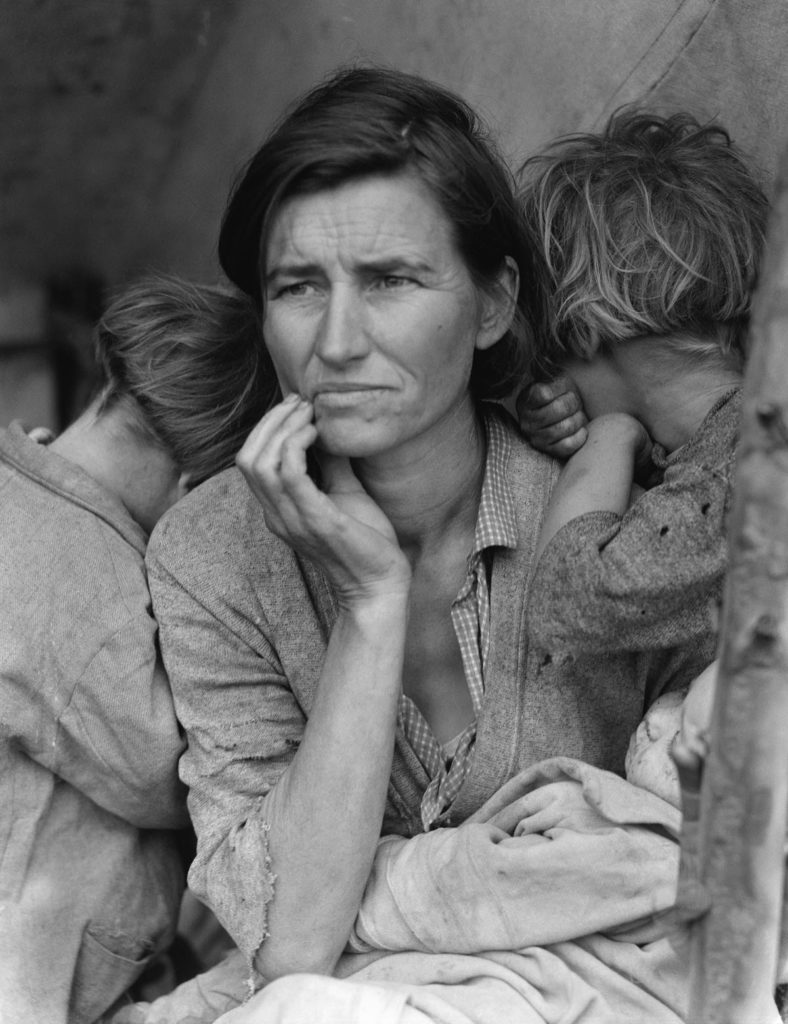
This is one of the images, which humanized the cost of the Great Depression. Lange was driving his car through “Pea Picker Camp”, but something caught his attention. She turned around. The photographer saw Frances Owens Thompson and knew she was in the right place.
“I saw and approached the hungry and desperate mother in the sparse lean-to tent, as if drawn by a magnet,” Lange later wrote.
The farm’s crop had frozen, and there was no work for the homeless pickers, so the 32-year-old Thompson sold the tires from her car to buy food, which was supplemented with birds killed by the children.
In the photo you can see the tired eyes of the concern and resignation of the woman.
Afterward Lange informed the authorities of the plight of those at the encampment, and they sent 20,000 pounds of food. Of the 160,000 images taken by Lange and other photographers for the Resettlement Administration, Migrant Mother has become the most iconic picture of the Depression. The image of the suffering nation.
Check my other blog posts.


